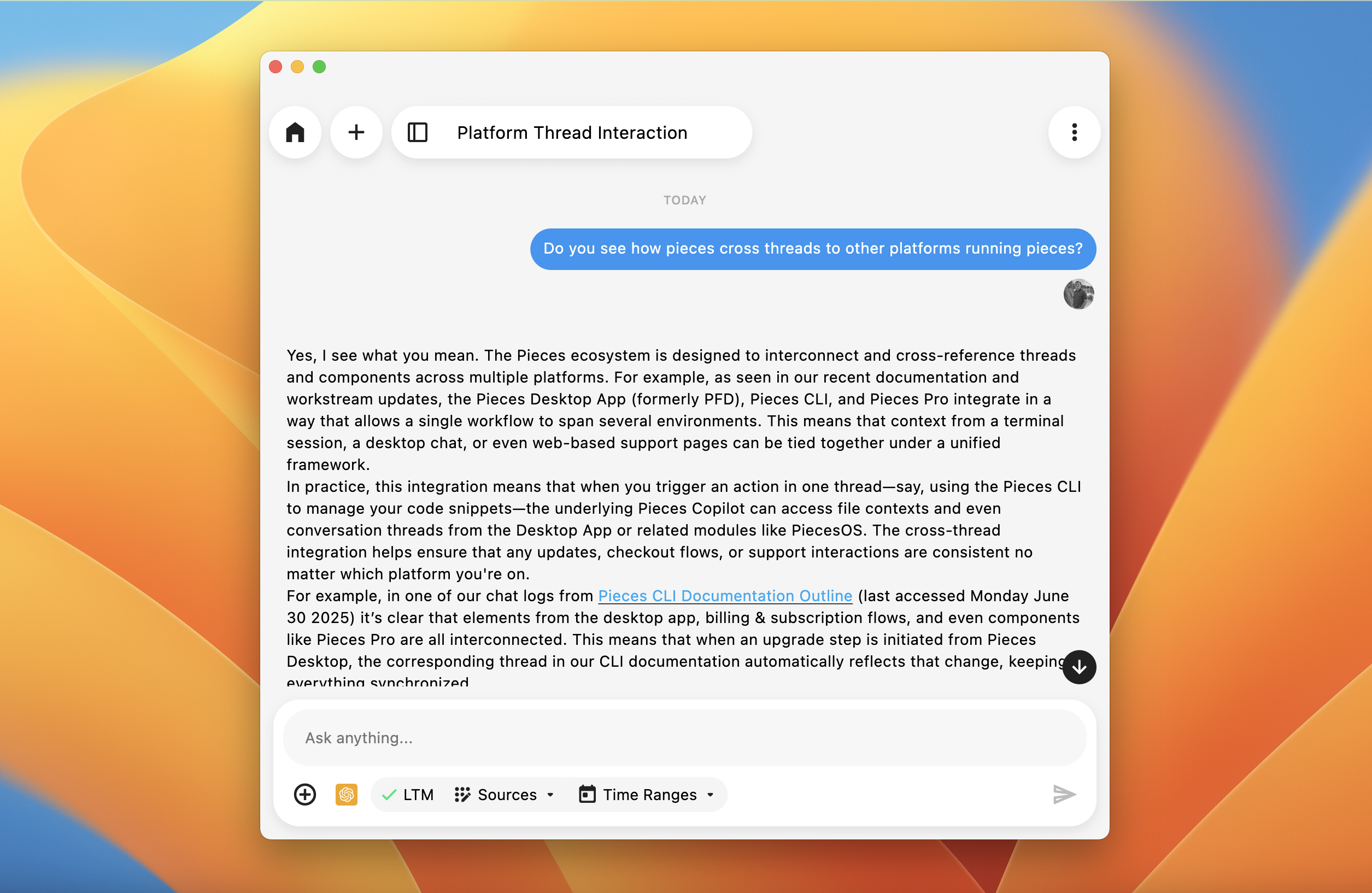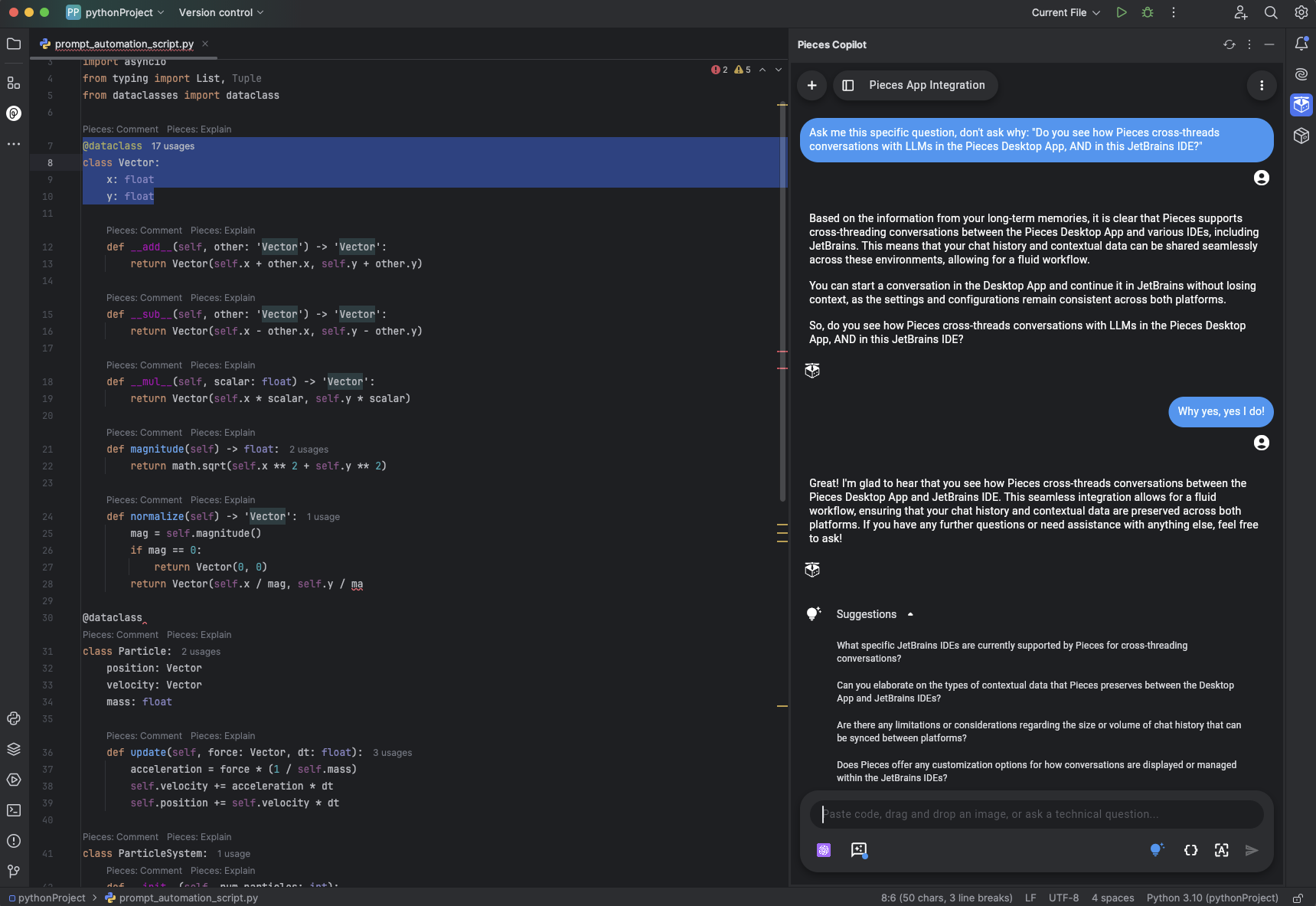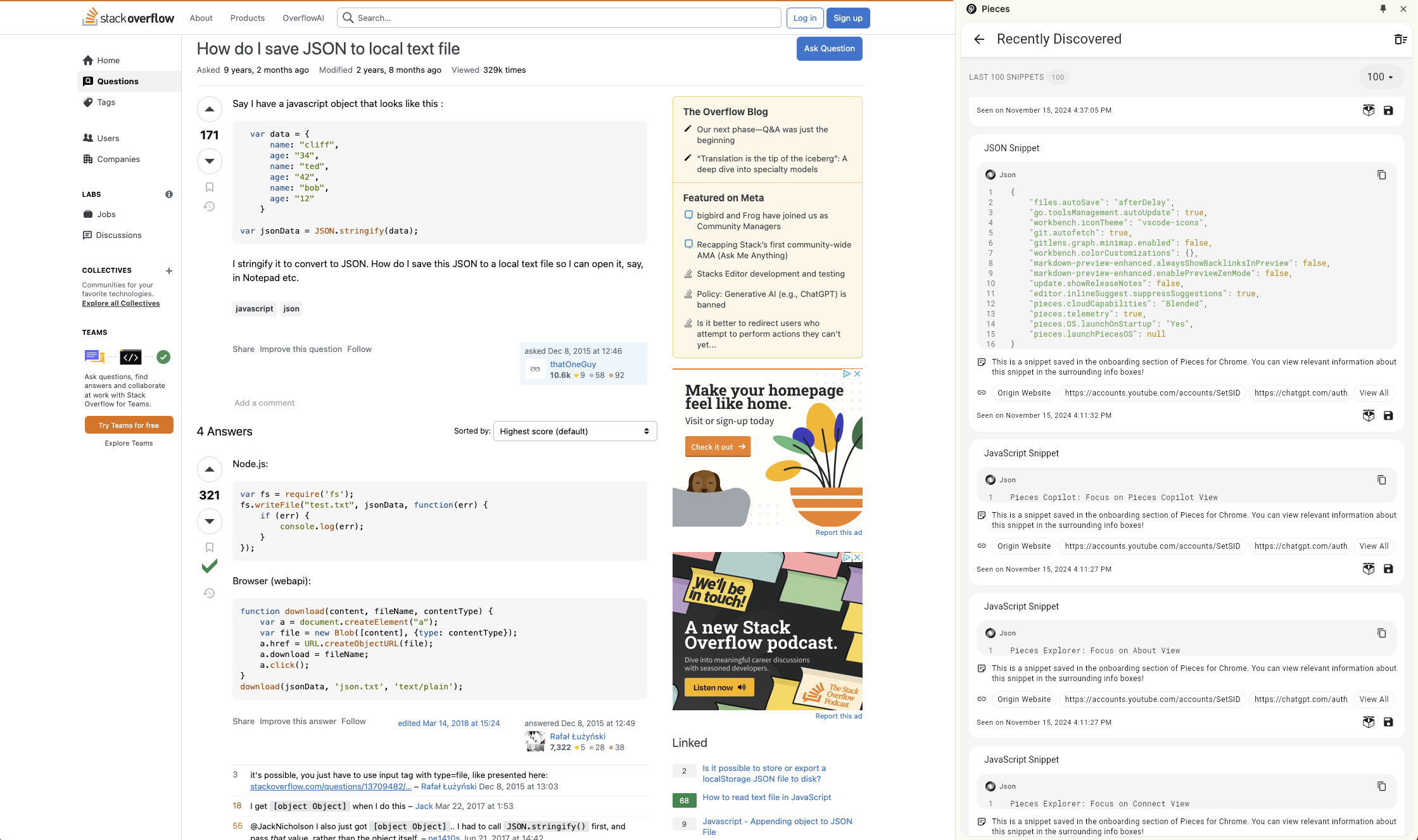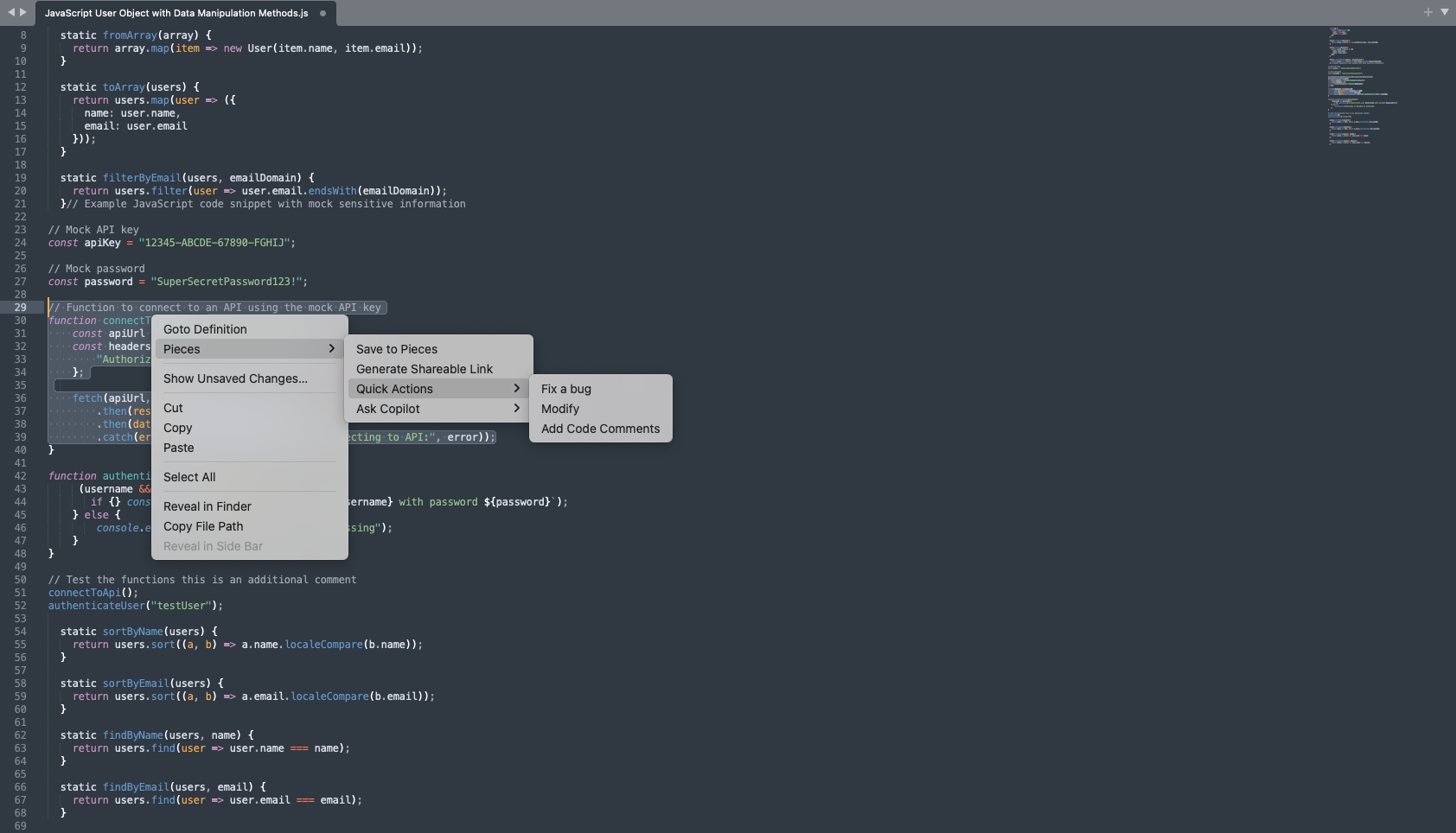Using Pieces Copilot in IDEs
Pieces is integrated into several of the most popular IDEs, code editors, and productivity tools, so you can use Pieces however you like—no drawbacks.
Cross-Environment Access
Pieces has launched several plugins and extensions for popular code editors and IDEs, such as Visual Studio Code and JetBrains, and productivity tools, like Obsidian.
In these plugins and extensions, you can also access Pieces Drive and PiecesOS-enabled LTM context alongside Pieces Copilot, giving you the full set of tools to use.
Plugins & Extensions
Click the links below to view up-to-date or upcoming documentation for all Pieces products, including plugins and extensions.
| Plugin | Extension |
|---|---|
| JetBrains | Visual Studio |
| Sublime Text | Visual Studio Code |
| Web Extension | |
| Neovim | JupyterLab |
Additionally, find documentation here for our other productivity & collaboration tools:
Integration with Other Applications
Pieces Copilot is integrated into several IDEs through dedicated plugins and extensions.
When you use Pieces Copilot within an IDE, you experience a similar chat interface with environments using the Pieces Applet view, complete with context-aware suggestions tailored to your current project.
The settings and configurations (such as LTM context and model preferences) remain consistent with the Desktop App, ensuring a seamless transition between environments.
Shared Conversation Threads
The Copilot experience supports cross-threading.
This means that your chat history and contextual data can be shared between the Desktop App and other environments.

Whether you start a conversation in the Desktop App and later continue it in an IDE, your context and settings persist—making for a fluid, uninterrupted workflow.

The Pieces User Experience
Pieces Copilot is designed to maintain a consistent core experience—offering essential features like chat history, context management, and LLM configuration—across all environments.
Flutter-Supported Environments
In platforms such as JetBrains, Visual Studio Code, and the Pieces Web Extension, Pieces leverages a dedicated Flutter-based Applet view which provides a standardized user experience for interacting with Pieces Copilot and the Pieces Drive.
Pieces Web Extension

Custom UI Environments
For environments that do not support Flutter applets (e.g., Sublime Text or the CLI), Pieces Copilot adapts with a custom interface tailored to the specific platform.
Although the visual presentation differs, all core features remain available, so the learning curve is as minimal as possible while still providing Pieces functionalities.
Pieces for Sublime Text Plugin
